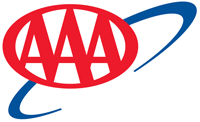 Nashville, TN – For over 70 years, AAA’s Your Driving Costs analysis has offered valuable insights into vehicle ownership expenses. This year’s analysis shows that the total cost of owning and operating a new vehicle is $11,577, or $964.78 per month, a $719.00 decline from 2024.
Nashville, TN – For over 70 years, AAA’s Your Driving Costs analysis has offered valuable insights into vehicle ownership expenses. This year’s analysis shows that the total cost of owning and operating a new vehicle is $11,577, or $964.78 per month, a $719.00 decline from 2024.
Factors contributing to this decline include depreciation, lower finance charges, reduced fuel prices, and a shift towards more affordable vehicle options. AAA advises potential buyers to consider these costs to choose the best vehicle type and model for their budget.
“It might be tempting to rush to the dealer for a new car when you notice a drop in ownership costs this year,” said Greg Brannon, AAA’s director of automotive research. “However, consumers should factor in all the expenses involved before making any commitments.”
Depreciation, which is the difference between a car’s purchase price and its resale value, is the most significant cost of vehicle ownership. This year, depreciation has decreased, with vehicles in the YDC study losing an average of $4,334 in value per year compared to $4,680 annually in 2024.
Categories driving lower costs this year include:
Finance Charges – Estimated finance costs have decreased to $1,131 in 2025, down 15 percent compared to $1,332 in 2024. *Please note: Sticker price decrease is partially due to new vehicles in YDC.
Fuel Prices – The average fuel cost dropped to 13.00 cents per mile, a 12.8% decrease from last year, while regular grade gasoline for YDC vehicles averaged $3.151 per gallon, down from $3.539. Meanwhile, electricity prices for charging electric vehicles rose slightly to 16.7 cents per kilowatt hour, up from 15.9 cents in 2024.
The Right Vehicle – Your Budget
Choosing the vehicle that suits your needs is important, as it can lead to significant savings over time. For example, while a pickup truck is ideal for heavy-duty hauling and towing, it comes at a steep cost, averaging an additional $6,402 per year compared to a small sedan, which operates at just 55.87 cents per mile—43.3 percent less than a pickup. This comparison highlights the importance of selecting a vehicle based on actual transportation needs.
Similarly, according to this year’s AAA EV survey, consumers are increasingly drawn to electric vehicles (EVs) for their gas savings and lower maintenance costs, with EVs having the second-lowest maintenance expenses among all vehicle categories. Hybrid options are also appealing, offering the lowest maintenance fees while sharing similar lower fuel cost benefits, even considering the national average electricity price of 16.7 cents per kilowatt-hour (kWh). Ultimately, whether opting for a pickup, a small sedan, or an EV, weighing these factors carefully to make a well-budgeted decision can lead to ownership savings.
Comparison of EV and Hybrid Ownership Costs to Gas-Powered
The primary factor affecting the cost differences between electric vehicles (EVs) and gas vehicles this year is fuel prices. While EVs remain more expensive in “ownership costs” (depreciation, insurance, fees, and financing), they have lower “operating costs,” particularly in fuel and maintenance. Last year, EV fuel costs were about one-third of gas vehicle costs.
This year, however, gasoline prices have significantly decreased, while electricity prices have slightly increased. Although EVs still offer fuel savings—less than half of gas vehicle costs—this does not sufficiently offset their higher ownership costs. Consequently, EVs are now more expensive overall across all vehicle categories in this study.
AAA continues to expand YDC by comparing top-selling EV and Hybrid models in four popular vehicle categories – medium sedan, compact SUV, medium SUV, and pickup truck. Over the years, automakers have expanded their lineups to include more appealing categories and popular models. Now, with this bonus analysis, consumers have a snapshot of ownership costs for select EV and Hybrid models compared to their gas-powered counterparts.



